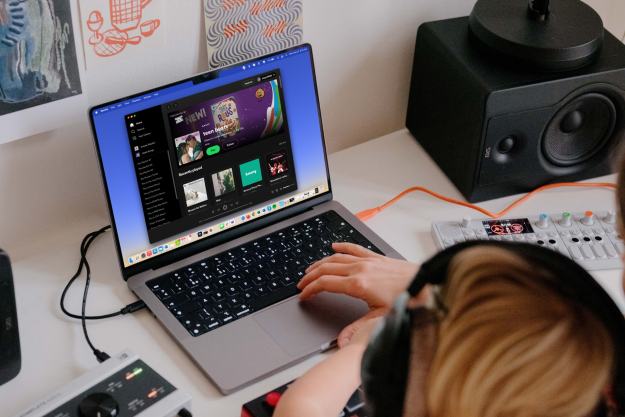At a press event today in California, Apple CEO Steve Jobs took the wraps off a new all-in-one iMac, featuring 20- and 24-inch screens and a new eco-friendly aluminum and glass design built with recycling in mind.
The new iMacs will be available with either 20- or 24-inch glossy LCD displays, powered by ATI Radeon graphics controllers. The systems will sport Intel Core 2 Duo processors at speeds up to 2.8 GHz (on the 24-inch model), handle up to 4 GB of RAM (accessible by removing just one screw), and offer from 250 GB to 1 TB of hard drive storage. Of course, the new iMacs will support 802.11n Wi-Fi wireless networking, and will also offer three USB 2.0 ports, one FireWire 400 port, and one FireWire 800 port, and a DVD-burning SuperDrive.
The new iMacs will be available immediately, with base configurations for 20-inch units starting at $1,199 and $1,499, and the 24-inch models starting at $1,799. The $1,799 price point is $200 lower than Apple’s previous high-end iMac configuration; the low-end config will sport ATI Radeon HD 2400XT graphics, while the remaining two configurations will offer ATI Radeon HD 2600 Pro graphics controllers.
Apple also updated its compact Mac mini breathing new life into its inexpensive “starter Mac” with faster processors.
Apple also announced iLife ’08, and update to its lifestyle and digital media application suite. iLife ’08 is the first update the software has seen in over a year and a half, and shows more fruit of Apple’s closer collaboration with Google—Google’s Eric Schmidt sits on Apple’s board. The new version of iPhoto enables users to center photograph collections around events rather by date or in arbitrary albums, users can also opt to hide individual photos. iPhoto will also integrate more closely with Apple’s $100/year .Mac online service, leveraging so-called “Web 2.0” technologies to enable users to synchronize photos (say, between an iPhone an a computer), as well as host Web-based image galleries to which other users can upload images. Apple will also increase .Mac storage quotas to 10 GB, to better accommodate (and encourage) users’ photo and video endeavors.
iLife ’08 also features a ground-up rewrite of iMovie, adding an iPhoto-like interface, text-like video selection, improved .Mac integration, and built-in support for uploading to YouTube. A new version of the iWeb authoring application adds support for Google Maps along with interactive Live Web Widgets which can embed functionality from sites like YouTube and Google’s AdSense. The audio production application GarageBand also gets a refresh, with “Magic Garage Band” feature giving users genre-based music creation tools, rather than forcing laborious searches through loop libraries. Users make their genre selections and audition a project and GarageBand will select loops and instrumentation to make it happen.
Apple will offer the iLife ’08 suite for $79, and will bundle it with all new Macintosh computers going forward.
Of course, some people use computers for work rather than just “life,” so Apple has also upgraded its iWork productivity suite, introducing a new spreadsheet application called Numbers to complement its Pages word processor and Keynote presentation package. Billed as a “spreadsheet for the rest of us,” Numbers offers intelligent tables which reformat, sort, and transform in useful and intuitive ways—Numbers will also import and export “almost all” Excel documents. Meanwhile, Pages has acquired distinct page layout and word processing mores (along with oodles of new document templates) while Keynote adds an “Instant Alpha” tool which drops backgrounds out of images so subjects can more easily be integrated into presentations. Like it’s predecessor, iWork ’08 will not be bundled with new Macs, but is available today for $79.
Apple also introduced a compact Bluetooth-based wireless keyboard, sporting a slim metallic design, dedicated media controls, and keys tied to specific Mac OS X functionality like Expose and the Dashboard. Apple will also offer a wired version of the keyboard, apparently to be bundled with desktop Macs. Over the years, Apple’s keyboard have gone from being among the industry’s best to mediocre-at-best: the new design is inspired by Apple’s notebook computers, but is leaving serious typists wondering how functional its sleek design will be.
Editors' Recommendations
- Hurry! This iMac is at its cheapest ever price right now
- I was wrong about using Stage Manager on Mac
- iMac deals: New, renewed and refurbished iMac computers
- Apple quietly backtracks on the MacBook Air’s biggest issue
- The 6 best ways Macs work with your other Apple devices


